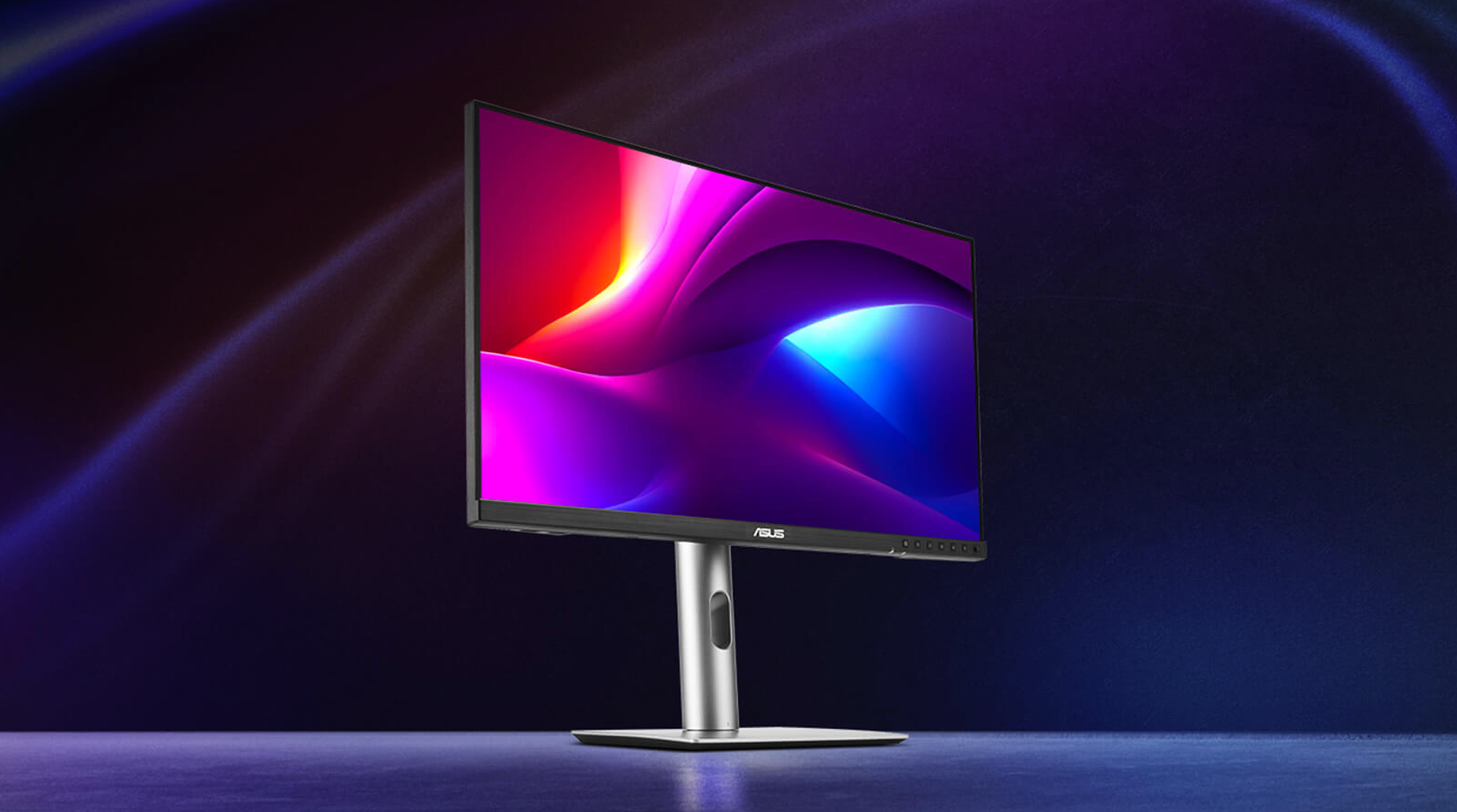
Creative professionals have long been searching for an affordable color-accurate display that doesn't compromise on quality. And the ASUS 5K ProArt PA27JCV could well be the answer they've been waiting for.
Back in my day, the concept of using a color-accurate monitor meant you were either at university or in a professional editing house. I had long given up on the idea of affording color accuracy at home, unless of course, I somehow won the lottery or landed that dream Netflix development deal.
But now here we are with the impressive ASUS ProArt PA27JCV, a 27-inch 5K IPS panel with factory-calibrated color accuracy (Delta E < 2), 99% DCI-P3 coverage, and VESA DisplayHDR 500, all wrapped up in a US MSRP $849 and European MSRP €799 package.
For creative professionals like video editors, photographers, and designers, this monitor looks to be a fantastic buy. It speaks fluent color science, covers all the important gamuts (95% Adobe RGB, 99% DCI-P3, 100% sRGB and Rec.709), and just looks crisp doing it.
It might not have the headline-grabbing QD-OLED flash of its bigger (and more expensive) sibling, the ASUS ProArt PA32UCDM, but for its price this hits all of the necessities and hits them well.

Technical specs
|
Panel: |
27-inch IPS with LuxPixel™ AGLR (Anti-glare, Low-reflection) coating |
|
Resolution: |
5120 × 2880 (5K), 218 PPI |
|
Color Coverage: |
99% DCI-P3, 95% Adobe RGB, 100% sRGB, 100% Rec.709 |
|
Factory Calibration: |
ΔE < 2 with calibration report included |
|
Color Modes: |
10 ProArt presets: Native, sRGB, Adobe RGB, Rec. 2020, DCI-P3, DICOM, Rec. 709, HDR, User Mode 1, User Mode 2 |
|
HDR Support: |
HDR-10, VESA DisplayHDR 500 |
|
Peak HDR Brightness: |
500 nits (peak), 400 nits (typical) |
|
Contrast Ratio: |
1500:1 (typical), 3000:1 (maximum) |
|
Bit Depth: |
True 10-bit (1.07 billion colors) |
|
Refresh Rate: |
60Hz with Adaptive-Sync (48~60Hz) |
|
Connectivity: |
USB-C with 96W Power Delivery & DisplayPort Alt Mode, DisplayPort 1.4, HDMI 2.1,USB Hub (USB 3.2 Gen 1 Type-C; USB 3.2 Gen 1 Type-A x 3), Earphone jack |
|
Special Features: |
Auto KVM switching, Ambient light sensor, Backlight sensor, DisplayWidget Center software |
|
Build & Ergonomics: |
85% post-consumer recycled plastic, Fully adjustable stand (height 0~130mm, tilt -5° ~ +23°, swivel -30° ~ +30°, pivot -90° ~ +90°), VESA mount compatible (100x100mm) |
|
Certification: |
TÜV Rheinland-certified Flicker-free & Low Blue Light |
|
Power Consumption: |
Typical: < 31.04W |
|
Dimensions: |
With Stand: 61.22 x 53.81 x 21.50 cm Without Stand: 61.22 x 36.29 x 4.41 cm |
|
Weight: |
With Stand: 5.91 kg (13.03 lbs) Without Stand: 4.14 kg (9.12 lbs) |
|
Included Accessories: |
Power cord, calibration report, quick start guide, warranty card, welcome card |
Design and build
Unboxing the PA27JCV is refreshingly low-drama. The packaging is fully recyclable, and ASUS has leaned into the “eco but fun” angle by giving you the option to turn the box into things like a phone stand or even a desk organiser. It’s a nice touch for those who would actually do it, and I love the ethical-minded creativity.
ASUS is clearly living its sustainability promises. The monitor uses 85% recycled plastics, features an ECO mode and a power switch that ensures it is OFF and uses 0 watts, as well as being a mercury-free panel.
Setup is plug-and-play. From the box, you clip the stand into place, and Boom! you’ve got yourself a monitor. The base is nice and compact, leaving ample desk real estate. While it is plastic, the build feels light but solid; it’s not premium metal, but it doesn’t feel cheap either. Plus it’s all black, so it just blends in enough for me to not think about it until I had to move it to take photos for this article.
You get full ergonomic flexibility. Height, tilt, swivel, and pivot are all here, and there’s VESA mount support if that’s your kinda thing. On my sit-stand desk, I can position it exactly how I want without any fuss.
One quiet win: all the OSD buttons are on the front. I cannot overstate how much I love that I don't need to fumble around the back like I’m cracking a safe whenever I want to change a setting. As always, ASUS’s on-screen menu remains one of my favourites with a simple, logical, and responsive layout. You even get handy dandy shortcuts that use every button whenever the menu is open. Switching color modes takes about four clicks, which matters more than you might think when switching between video and photo workflows throughout the day.
You can also use ASUS’ great and functional DisplayWidget software, though I personally found no need, the buttons are enough and I like buttons.

Display Performance
Now for the screen meat of the matter. The 5120 x 2880 resolution delivers an impressive 218 pixels per inch. This clarity puts it right up with Apple's Studio Display but at roughly half the price, giving you 77% more workspace than standard 4K. When I'm working with complex timelines or multi-layered designs, that extra real estate makes a surprising tangible difference for a Windows boy like me.
Being an IPS panel, you won't get OLED-level blacks, but it manages a respectable 1500:1 contrast ratio – better than the typical 1200:1 on most IPS displays. Peak brightness ranges between 550-650 nits, and the anti-glare, low-reflection coating works wonders. The coating does give a very minor haze compared to glossy screens, but for this kind of work you just forget about it and the tradeoff in practicality feels worth it to me.
Color accuracy is where this monitor truly earns its keep. The factory calibration is spot-on, verified by the included third-party lab report which is a nice touch. When grading footage for a recent project, what I saw on screen translated exactly to the final output with no nasty surprises. Whether working in DCI-P3, Adobe RGB, or Rec.709, the colors remained consistent and trustworthy in my tests.
The 10-bit color depth (1.07 billion colors), HDR-10, and DisplayHDR 500 support provide enough dynamic range for most professional work. It gives you enough punch for web and broadcast deliverables, and anyone after an HDR-focused monitor would move closer towards OLED anyway.
Overall, this is a sharp, beautiful display. Plus I was able to easily adjust any setting or brightness level as needed super quickly, thanks to those wondrous onscreen buttons.
Creative workflow
Connectivity is solid: USB-C with 96W power delivery, DisplayPort 1.4, HDMI 2.1, a USB hub, and a headphone jack. I saw a few Apple user comments about the lack of webcam, but that's hardly a deal-breaker for a monitor focused on creative work, and usually creators would use their own anyway.
The auto KVM switch is a genuine highlight. I had a few tests switching between my home PC and work laptop; the monitor handles input transitions seamlessly, maintaining color profiles without fuss.

In practical use, this monitor proved to be exceptional for me. I edited and graded multiple videos, as well as processed photo batches in Lightroom with complete confidence that the colors would be accurate. I'm not used to a larger single-screen real estate in my day-to-day life, and it really has made me more productive by having everything I need on one big screen. Everything just works. Plus, that extra resolution makes a real noticeable difference with photos especially, allowing me to see every pixel my camera captured in all their glory.
Final verdict
The ProArt PA27JCV focuses on what creative professionals actually need: reliable color accuracy, sharp resolution, and practical usability at a price that won't devour your entire project's budget.
After three weeks with this monitor, I'm genuinely impressed by how it balances professional performance with accessibility. It's made color-critical work at home not just possible, but pleasurable. For anyone serious about color, at an affordable $849 price and with great features, this monitor deserves a spot on your shortlist – and probably on your desk too.


Comments